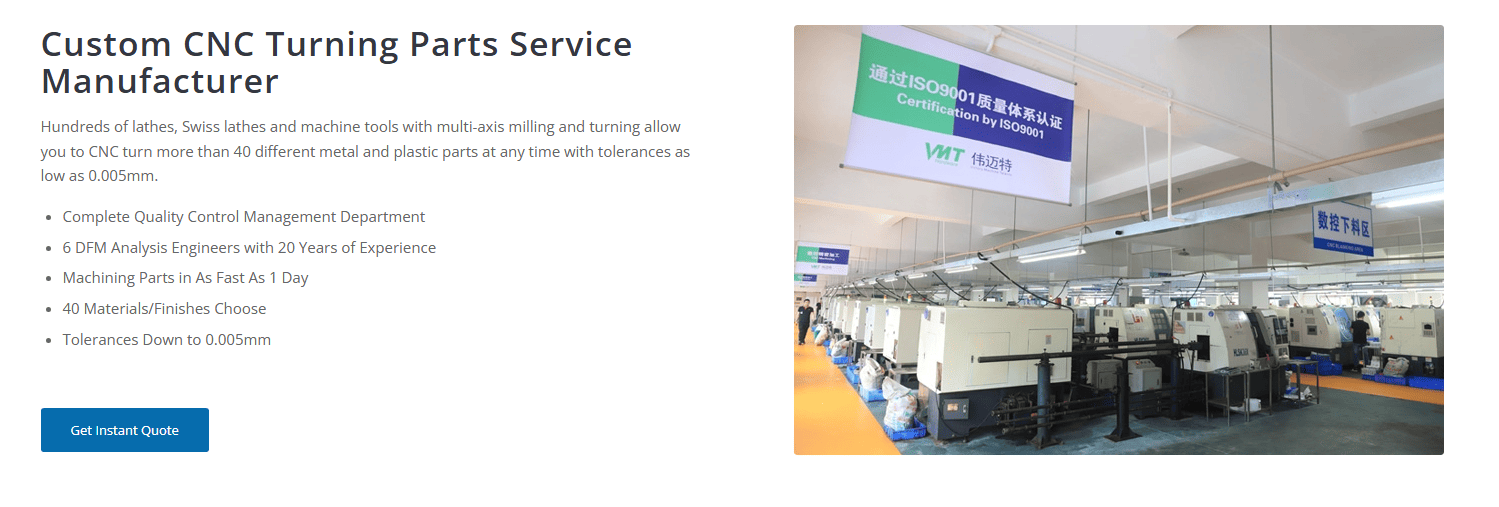The Ultimate Guide to Stainless Steel Turning
Stainless steel turning is an essential process in modern manufacturing, known for its precision and versatility. As industries demand more sophisticated, durable, and high-performance components, mastering stainless steel turning becomes a necessity for manufacturers.
Stainless steel turning refers to the process of machining stainless steel into precise, high-quality parts using lathe machines. It is used across various industries, from automotive to medical equipment, ensuring components meet stringent performance standards.In this ultimate guide, we will explore everything you need to know about turning stainless steel, from the basics to advanced techniques, and cover the benefits, challenges, and best practices involved.
Let’s dive deeper into the turning process of stainless steel, and explore the key aspects that contribute to its success.
What is Meant by Turning Stainless Steel?
Turning stainless steel is a precise and versatile machining process where a rotating stainless steel workpiece is shaped and refined using cutting tools. This process is primarily conducted on CNC lathes or turning centers, which ensure precision and repeatability. By removing material from the surface of the workpiece, turning achieves specific shapes, diameters, and smooth finishes tailored to industrial requirements.
The process is vital for manufacturing cylindrical or conical parts like shafts, screws, flanges, and bushings, commonly used in machinery, medical devices, and aerospace components. Turning stainless steel requires careful consideration of its hardness, toughness, and heat resistance to ensure high-quality results and tool longevity. Using appropriate cutting tools, cooling methods, and machining speeds is critical to overcoming challenges like work hardening and heat buildup.
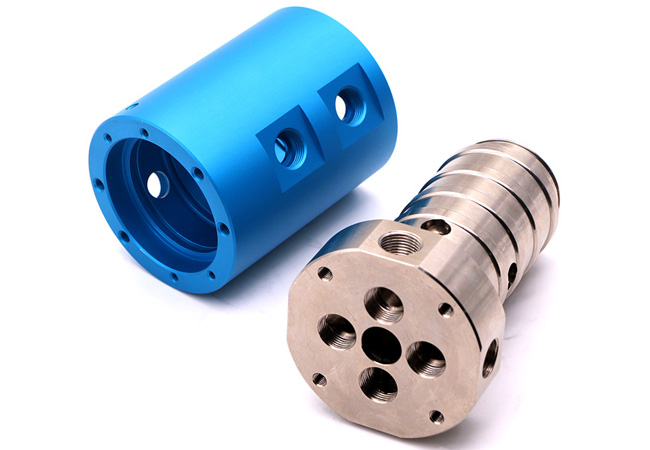
What is Stainless Steel?
Stainless steel is an alloy primarily composed of iron, carbon, and chromium, and often includes other elements such as nickel and molybdenum. These additions give stainless steel its exceptional corrosion resistance, durability, and strength.
There are several grades of stainless steel, including 304, 316, 17-4, and others. Each grade has unique properties that make it suitable for different applications. For example, 304 stainless steel is widely used for its excellent corrosion resistance, while 316 stainless steel offers enhanced resistance to corrosion and is often used in marine environments.
Note: If you want to learn more about stainless steel, you can read the following articles:
Is Stainless Steel Magnetic? A Comprehensive Guide
304 vs 316 Stainless Steel: Everything You Need to Know
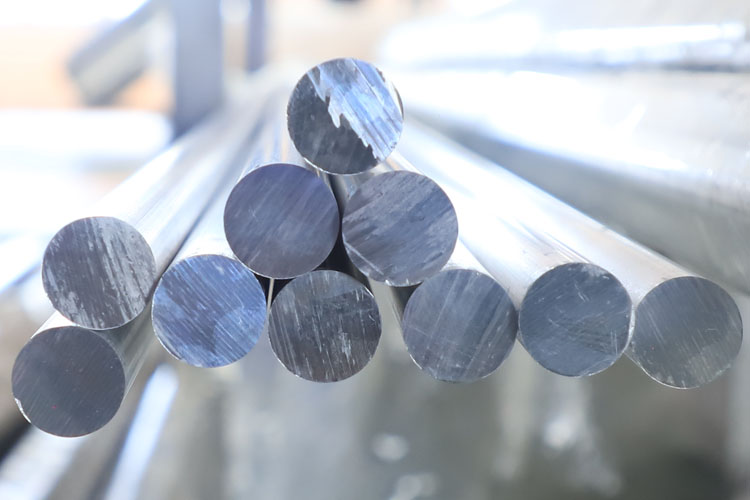
Can Stainless Steel Be Machined?
Yes, stainless steel can be machined, but it is known for its challenging machinability compared to other metals. The hardness and toughness of stainless steel make it difficult to machine, particularly when turning 316 stainless steel or 17-4 stainless steel. Factors such as work-hardening, the need for high cutting forces, and the generation of excessive heat can pose challenges during the machining process. However, with the right tooling, settings, and cooling techniques, stainless steel can be machined successfully.
Types of Stainless Steel
Stainless steel is an alloy that combines iron with chromium, nickel, and other elements to enhance its resistance to corrosion, heat, and wear. Depending on its composition, each type of stainless steel has distinct properties that make it ideal for specific applications. The following are some of the most common types of stainless steel used in machining and manufacturing:
format:
| Type | Composition & Properties | Applications | Machinability |
|---|---|---|---|
| 304 Stainless Steel | Contains ~18% chromium and 8% nickel. Offers excellent corrosion resistance, good machinability, and durability. | – Food & Beverage: Processing equipment, storage tanks, kitchen appliances. – Pharmaceuticals: Used in processing equipment due to its cleanliness and resistance to chemicals. – Architecture: Exterior cladding, handrails, and building materials. |
– Easier to machine compared to other stainless steels. – Requires high-speed steel or carbide tools. – Work hardening can cause machining challenges. |
| 316 Stainless Steel | Contains ~16% chromium, 10% nickel, and 2-3% molybdenum for superior corrosion resistance, especially in harsh environments. | – Marine & Offshore: Shipbuilding, offshore rigs, coastal structures. – Chemical Processing: Pipes, tanks, heat exchangers. – Medical Devices: Surgical instruments, implants. |
– Harder to machine than 304. – Work hardens quickly, leading to tool wear. – Requires carbide inserts and coated tools. |
| 17-4 Stainless Steel | Precipitation-hardening alloy with 17% chromium and 4% nickel. High strength and corrosion resistance. | – Aerospace: Aircraft components, turbine parts. – Military & Defense: Weapons, armored vehicle parts. – Power Generation: Pumps, valves, shafts. |
– Good machinability compared to other hardened stainless steels. – Requires careful machining to maintain properties. – Responds well to CNC machining. |
| 416 Stainless Steel | Free-machining martensitic stainless steel with added sulfur and phosphorus. Offers high machinability but lower corrosion resistance. | – Precision Machining: Used in automotive and industrial parts. – Fasteners: Screws, bolts, and other high-machinability components. – Valves & Pumps: Used in chemical and food industries. |
– One of the easiest stainless steel grades to machine. – Can be turned, drilled, and milled at high speeds. – Has lower corrosion resistance than 304 and 316. |
| 430 Stainless Steel | Ferritic stainless steel with ~16-18% chromium and little to no nickel. Magnetic, moderate corrosion resistance. | – Automotive: Exhaust systems, trim parts, decorative components. – Household Appliances: Refrigerators, dishwashers, cooking equipment. |
– Easier to machine than 304 but requires slower speeds. – Prone to galling, needs careful machining. |
Stainless Steel CNC Turning Processes
Turning stainless steel involves a series of steps, with CNC turning being the most commonly used method. In this process, a lathe rotates the stainless steel workpiece while a cutting tool gradually removes material to shape the part.
Steps Involved in Stainless Steel Turning:
Setup: The first step is to securely mount the stainless steel workpiece onto the lathe. Proper setup ensures stability and precision during machining.
Tool Selection: Selecting the right cutting tool is crucial. Stainless steel is a tough material, so it’s essential to choose a tool that can handle the high temperatures and pressure generated during machining. Carbide cutting tools are often recommended for stainless steel due to their durability and wear resistance.
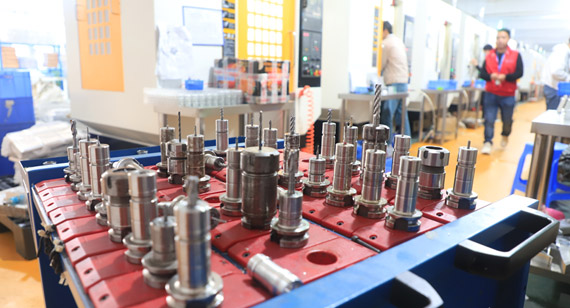
Cutting Parameters: The cutting speeds and feeds must be carefully adjusted according to the grade of stainless steel being used (e.g., 304 stainless steel or 316 stainless steel), as well as the size and complexity of the part. Stainless steel requires lower cutting speeds and feeds compared to softer metals due to its inherent toughness.
Coolant and Cutting Fluids: Using coolant or cutting fluids during turning is essential to maintain the temperature of the cutting tool and workpiece. These fluids help prevent overheating, reduce friction, and extend tool life, ensuring smooth and efficient machining.
Is Stainless Steel Difficult to Machine?
Yes, stainless steel is considered more difficult to machine compared to other metals. The main difficulties stem from the material’s hardness, toughness, and work-hardening tendencies. When machining 316 stainless steel or 17-4 stainless steel, you need to take extra precautions to ensure the process runs smoothly.
Factors Affecting Machinability
Several factors influence the machinability of stainless steel, and understanding these is critical to achieving optimal results. The key factors that affect the machining process include:
| Factor | Impact on Machinability | Key Considerations |
|---|---|---|
| Hardness | Stainless steel is harder than metals like aluminum, leading to increased tool wear and higher cutting forces. Improper machining can result in a rough surface finish. | Use high-quality cutting tools (carbide or coated tools). Optimize cutting parameters to reduce excessive tool wear. |
| Heat Generation | Low thermal conductivity causes heat buildup at the cutting interface, leading to tool wear and potential thermal distortion of the workpiece. | Use effective cooling systems (coolants, cutting fluids) to dissipate heat and extend tool life. |
| Work Hardening | The machined surface becomes harder as material is removed, making further machining more difficult and increasing cutting forces. | Use appropriate cutting speeds and feeds to minimize excessive deformation. Avoid dull tools that can worsen work hardening. |
| Toughness & Ductility | Stainless steel’s high toughness and ductility make it resistant to fracture but also prone to deformation during machining. This can result in longer machining times and increased tool wear. | Optimize tool geometry and machining strategies to minimize material deformation. Use rigid setups to prevent vibration. |
| Chemical Composition | Different alloying elements affect machinability. For example, molybdenum in 316 stainless steel improves corrosion resistance but makes it harder to machine than 304. | Adjust tool selection, cutting parameters, and cooling techniques based on the specific stainless steel grade. |
| Tool Wear & Edge Geometry | Worn or improperly designed cutting tools struggle to effectively cut stainless steel, leading to poor machining performance and reduced efficiency. | Regularly inspect and replace cutting tools. Choose the right tool material and geometry to optimize performance. |
What Problems Can Occur During Stainless Steel Turning?
Turning stainless steel presents several challenges, which, if not addressed properly, can affect both the quality of the finished part and the efficiency of the machining process. Some of the most common issues encountered during stainless steel turning include:
Tool Wear: One of the most significant challenges when machining stainless steel is the rapid wear of cutting tools. Due to the material’s inherent hardness, particularly in grades like 316 or 17-4 stainless steel, the cutting edges of tools can degrade quickly, reducing their effectiveness. To mitigate this, it’s crucial to select the right tool material, such as carbide tools, which offer better wear resistance and heat tolerance. Regular monitoring and tool replacement are also necessary to maintain optimal performance.
Surface Finish Issues: Stainless steel’s tendency to work-harden during machining can lead to uneven or rough surface finishes. This occurs because the material becomes harder on the surface as it is cut, making it more difficult to achieve a smooth, clean finish. Improper tool selection, incorrect cutting speeds, or insufficient lubrication can exacerbate these issues. To improve surface finish, it is important to choose the right tool geometry and cutting parameters, as well as ensure adequate coolant flow.
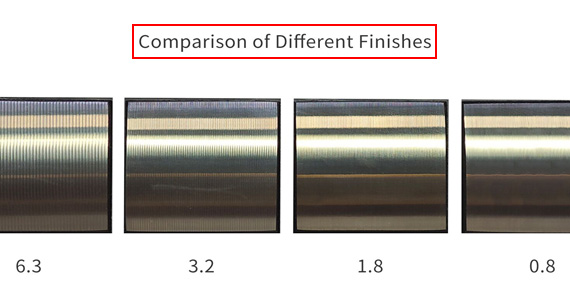
Heat Build-Up: Stainless steel has low thermal conductivity, which means that heat generated during machining tends to accumulate at the cutting zone. This build-up of heat can cause both tool wear and material distortion. Overheating can also lead to a decrease in the strength and hardness of the tool, which can compromise part quality. Using cutting fluids or coolants effectively can help control temperature, while adjusting cutting speeds and feeds according to the material grade can reduce heat generation.
Material Deformation: If the stainless steel workpiece is not securely clamped or supported during machining, it may deform, leading to dimensional inaccuracies or surface imperfections. The deformation can also occur due to the internal stresses within the material or from excessive cutting forces. To avoid this problem, it is essential to use the proper clamping techniques, such as vices, jaws, or fixture supports, that ensure the part is held rigidly in place.
Chatter and Vibration: Chatter, which refers to unwanted vibrations during machining, can lead to poor surface finish and even tool damage. This problem is often caused by improper machine settings, worn-out tools, or inadequate support for the workpiece. Adjusting feed rates, tool selection, and machine stiffness can help reduce chatter and ensure a smoother cut.
Work Hardening: As stainless steel is machined, the material’s surface can undergo work hardening, making it harder and more resistant to cutting. This effect is particularly pronounced in grades such as 304 stainless steel. To overcome this issue, it’s important to use a continuous cutting motion with consistent feed rates, as well as selecting the right cutting parameters to prevent excessive material deformation.
Chip Control: Stainless steel tends to produce long, stringy chips that can wrap around the tool or workpiece, leading to operational problems. Effective chip removal is crucial to prevent these chips from interfering with the machining process. Using the correct cutting tool geometry, optimizing feed rates, and ensuring proper coolant application can help maintain smooth chip flow.
What Are the Advantages of Stainless Steel?
| Advantage | Description | Typical Applications |
|---|---|---|
| High-Temperature Resistance | Maintains strength and resists deformation under extreme heat, tolerating up to 1,800°F (982°C). Alloys with high nickel or molybdenum enhance resistance to oxidation and scaling in constant heat environments. | Petrochemical equipment, power generation components, aerospace parts, furnace elements, turbine blades, reactor vessels |
| Strength-to-Weight Ratio | Combines high strength with relatively low weight, supporting structural integrity while minimizing mass. Helps improve fuel efficiency in transportation. | Automotive exhaust systems, chassis parts, aerospace engine components, airframes, fasteners |
| Hygiene and Cleanliness | Smooth, non-porous surface prevents bacterial growth and is easy to sterilize. Resistant to corrosion, ensuring safe and durable use in hygienic environments. | Medical devices, surgical instruments, food processing equipment, pharmaceutical machinery, storage tanks |
| Sustainability and Recyclability | 100% recyclable without quality loss, supporting circular economy goals and reducing environmental impact. | Green building projects, renewable energy systems, eco-friendly product manufacturing |
| Impact Resistance | Withstands shocks, vibration, and sudden mechanical stresses without cracking or failure. Enhances safety and extends product lifespan. | Industrial machinery, pressure vessels, bridge structures, public infrastructure |
| Low Maintenance | Resists rust and corrosion, retaining appearance without frequent painting or coating. Easy to clean, saving time and costs. | Kitchen appliances, exterior building cladding, hospital and laboratory equipment |
| Magnetism Resistance | Non-magnetic grades (e.g., austenitic stainless steels) prevent magnetic interference in sensitive environments. | MRI scanner housings, electronic enclosures, telecommunications equipment |
Best Stainless Steel Turning Services
VMT offers a comprehensive range of professional stainless steel processing services dedicated to meeting the various customized needs of customers. In addition to its signature CNC turning precision processing services, VMT is also known for its efficient and fast processing processes and superb sheet metal prototyping and 3D printing technology.
In addition, VMT’s service scope also covers cutting, bending, extrusion, surface treatment and other links, ensuring that customers can get a one-stop solution from design to finished product. Whether it is a small batch trial or large-scale production, VMT can provide high-quality and efficient processing services. Contact us now to get a free quote for stainless steel CNC turning!
In Conclusion
Turning stainless steel requires careful consideration of materials, tools, and processes. By selecting the right techniques, cutting speeds, and cooling strategies, you can ensure high-quality results with a long-lasting, durable finish.
Whether you’re machining 304 stainless steel for automotive components or 316 stainless steel for medical devices, mastering the intricacies of stainless steel turning is essential for successful manufacturing.
Blog About the Stainless Steel and Turning
Frequently Asked Questions
What is the Most Common Machined Stainless Steel?
The most common machined stainless steel is 304 stainless steel. It is widely used due to its excellent corrosion resistance, good formability, and weldability. 304 stainless steel is commonly used in food processing, medical devices, chemical equipment, and architectural applications. Its resistance to rust and ability to maintain structural integrity in various environments make it a popular choice for machining.
Does Stainless Steel Turn Green?
Yes, stainless steel can turn green under certain conditions, especially when exposed to chlorine or moisture. This green color is typically a result of corrosion or the formation of copper salts from contaminants like copper or certain chemicals. However, high-quality stainless steel (like 304 or 316) is generally resistant to corrosion. If green staining occurs, it’s often a sign of improper maintenance, chemical exposure, or a need for cleaning.
How to turn Stainless Steel Black?
Turning stainless steel black can be done using a process called blackening or bluing. This process creates a dark finish on the surface, often for aesthetic purposes or to improve corrosion resistance. Methods include:
Chemical Blackening (Black Oxide): Applying a chemical solution to the steel that forms a dark oxide layer.
Electroplating: Using an electric current to deposit a black metal layer onto the stainless steel surface.
Heat Treatment: Heating the stainless steel to a specific temperature to cause oxidation, creating a blackened finish.

